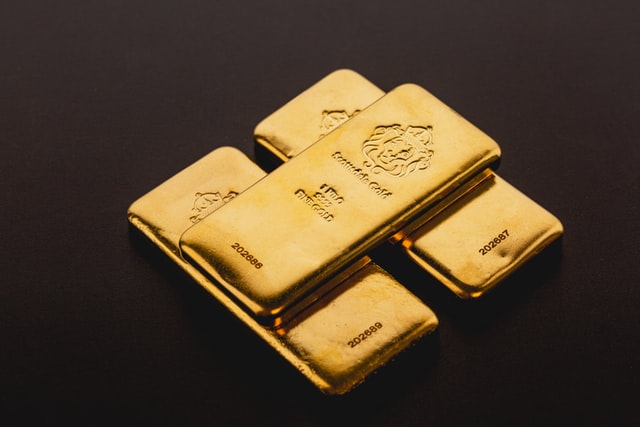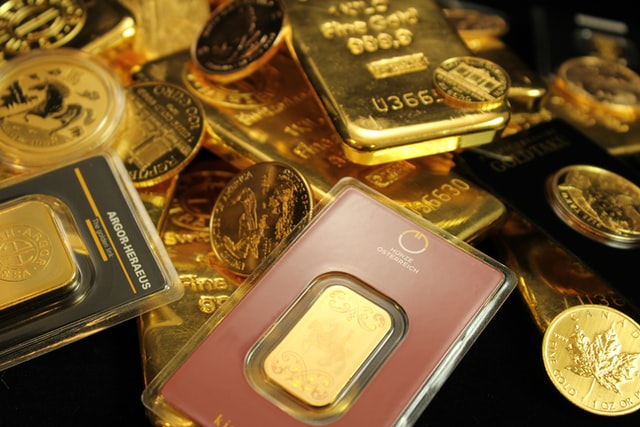One of the earliest and most valued metals known to man. For centuries men everywhere have dreamed of finding gold; they have mined it, bartered with it, and even died for it since the beginnings of civilization. It is virtually indestructible, resists corrosion, blocks 98% of radioactivity and conducts electricity. Its uses are almost endless and have just begun to be tapped.
The consumption of gold produced in the world is about 50% in jewelry, 40% in investments, and 10% in industry
Supply
90% of the world’s gold is found in only four countries, South Africa, the former Soviet Union, the United States and Canada. South Africa has dominated world gold production and accounts for about 50% of the total world supply. The former Soviet Union accounts for 32%, the United States for 6%, and Canada for 3%. The rest of the world combined produces about 9%. The total yield, however, has been incredibly small. Unlike other such commodities, because of hoarding and stockpiling, each year’s production is a very small part of the available supply. An estimated 2/3 of all the gold on earth has already been mined. Only about 171,300 tons as of 2011 according to GSFM Ltd have been extracted from the earth in all of recorded history. This equates to 5.5 billion troy ounces. It is this scarcity, along with gold’s beauty, durability, and compactness that has made gold the ideal standard and store of value. Only 3,000 metric tons of gold in 2021.

Liquidity
This metal has been a valuable and highly sought-after precious metal for coinage, jewelry, and other arts since long before the beginning of recorded history. Gold standards have sometimes been a monetary policies, but were widely supplanted by fiat currency starting in the 1930s. The last gold certificate and gold coin currencies were issued in the U.S. in 1932. In Europe, most countries left the gold standard with the start of World War I in 1914 and, with huge war debts, failed to return to gold as a medium of exchange.

Perhaps the most amazing feature of gold is its stability as a standard of real value. Although its value may fluctuate, history proves its buying power tends to remain the same. Gold has been the most coveted metal in the world and the single most trusted international medium of exchange for thousands of years. Trade between countries frequently is based on gold’s value as it is the world’s most reliable currency. While paper currencies have been devalued, eroded by inflation, and become virtually worthless, gold has maintained its purchasing power. Gold has been the established standard for centuries. During times of inflation, people have turned to gold for both profit and protection.
The first gold coins of the Grecian age were struck in Lydia around 700 BC. The talent coin of gold in use during the periods of Grecian history both before and during the time of the life of Homer weighed between 8.42 and 8.75 grams. From an earlier preference in using silver, European economies re-established the minting of gold as coinage during the thirteenth and fourteenth centuries.
However, production has not grown in relation to the world’s economies. Today, gold mining output is declining. With the sharp growth of economies in the 20th century, and increasing foreign exchange, the world’s gold reserves and their trading market have become a small fraction of all markets and fixed exchange rates of currencies to gold were no longer sustained.

The Hedge Against Inflation
The primary factors influencing gold prices are anticipated inflation caused by huge U.S. deficits and the diminishing power of world currencies. As people lose confidence in a government’s ability to control inflationary pressures, they turn to gold. While gold prices may fluctuate from day to day in world markets, the long-term demand for this timeless treasure can be expected to continue. The current gold market conditions offer profitable opportunities; take advantage of these opportunities and own gold today.
Besides its widespread monetary and symbolic functions, gold has many practical uses in dentistry, electronics, and other fields. Its high malleability, ductility, resistance to corrosion and most other chemical reactions, and conductivity of electricity led to many uses of gold, including electric wiring, colored-glass production and gold leafing.



